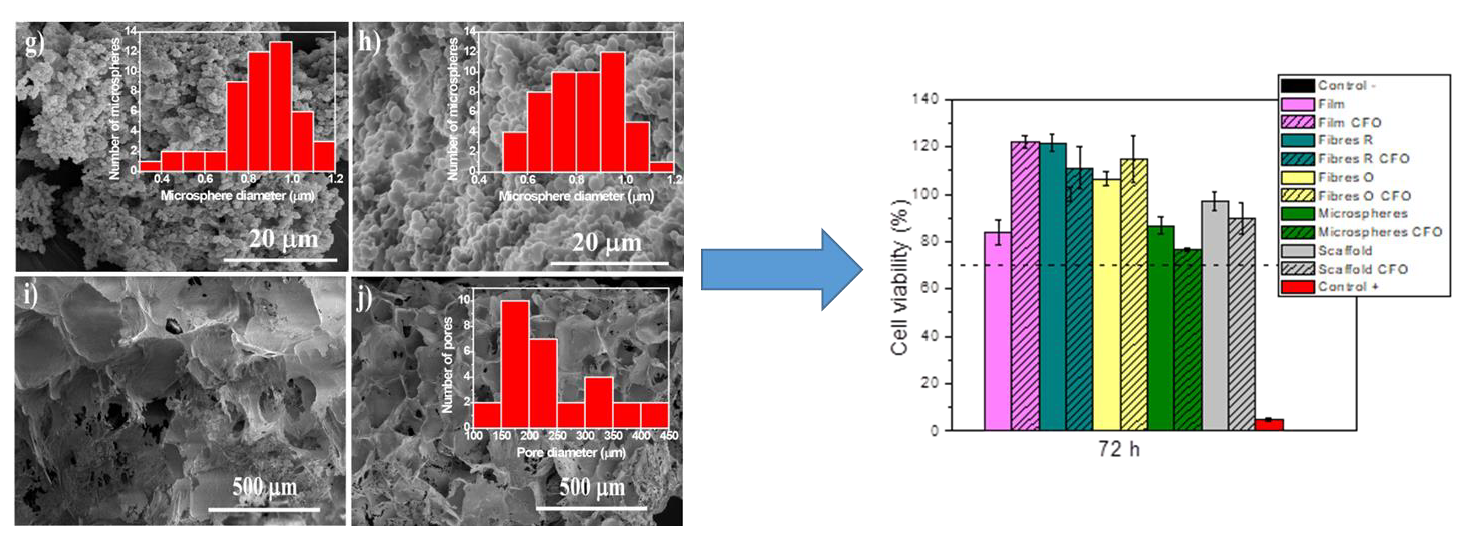Polymer-based piezoelectric biomaterials have already proven their relevance for tissue engineering applications. Further, the morphology of the scaffolds plays also an important role in cell proliferation and differentiation. The present work reports on poly(hydroxybutyrate-co-hydroxyvalerate) (PHBV), a biocompatible, biodegradable and piezoelectric biopolymer that has been processed in different morphologies, including films, fibres, microspheres and 3D scaffolds. Further, the corresponding magnetically active PHBV-based composites were also produced. The effect of the morphology on physico-chemical, thermal, magnetic and mechanical properties of pristine and composites samples was evaluated, as well as their cytotoxicity. It was observed that the morphology does not strongly affect the properties of the pristine samples but the introduction of cobalt ferrites induces changes in the degree of crystallinity that could affect the applicability of prepared biomaterials. Young modulus is dependent of the morphology and also increases with the addition of cobalt ferrites. Both, pristine and PHBV/cobalt ferrite composite samples are no cytotoxic, indicating their suitability for tissue engineering applications.

